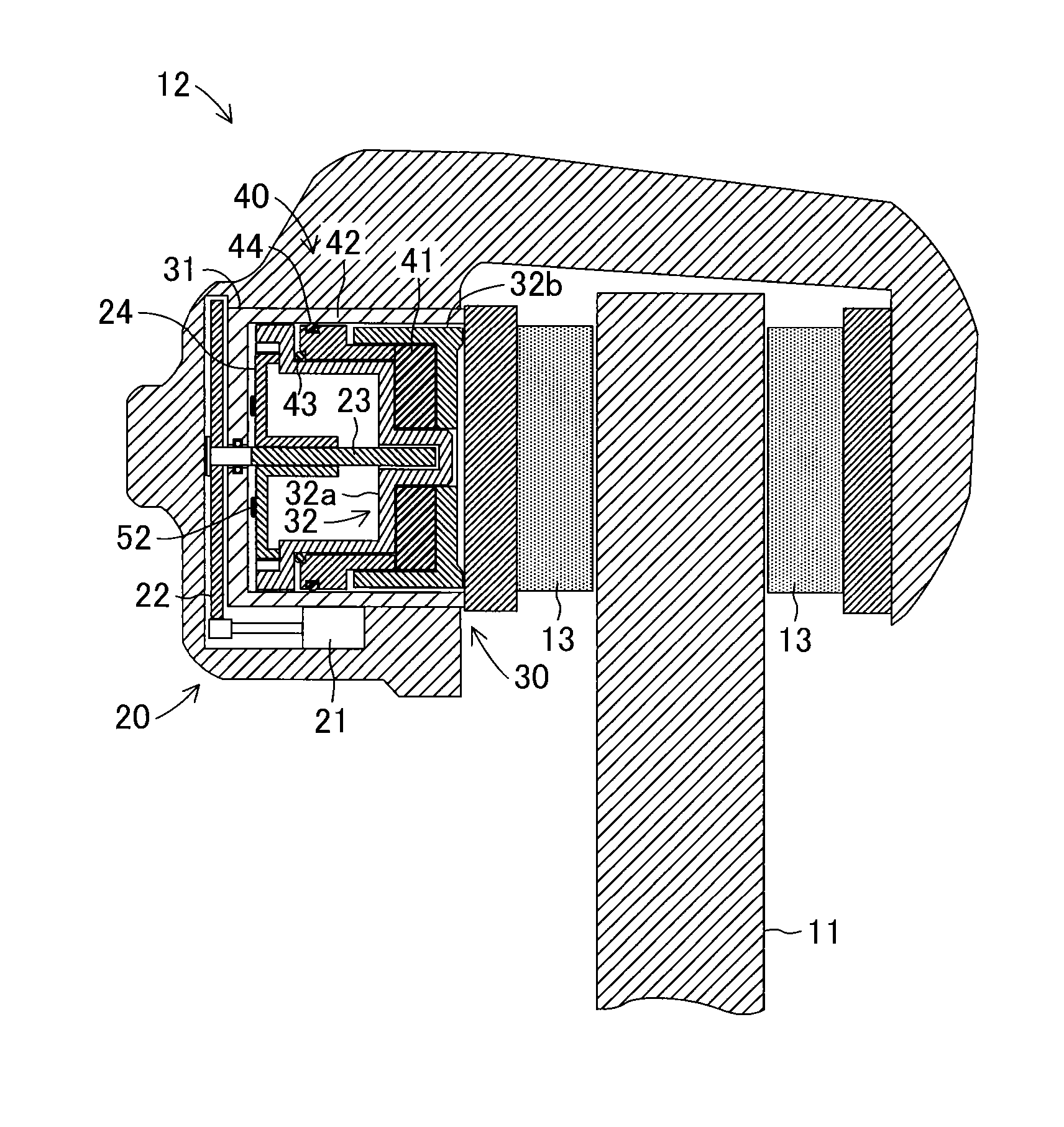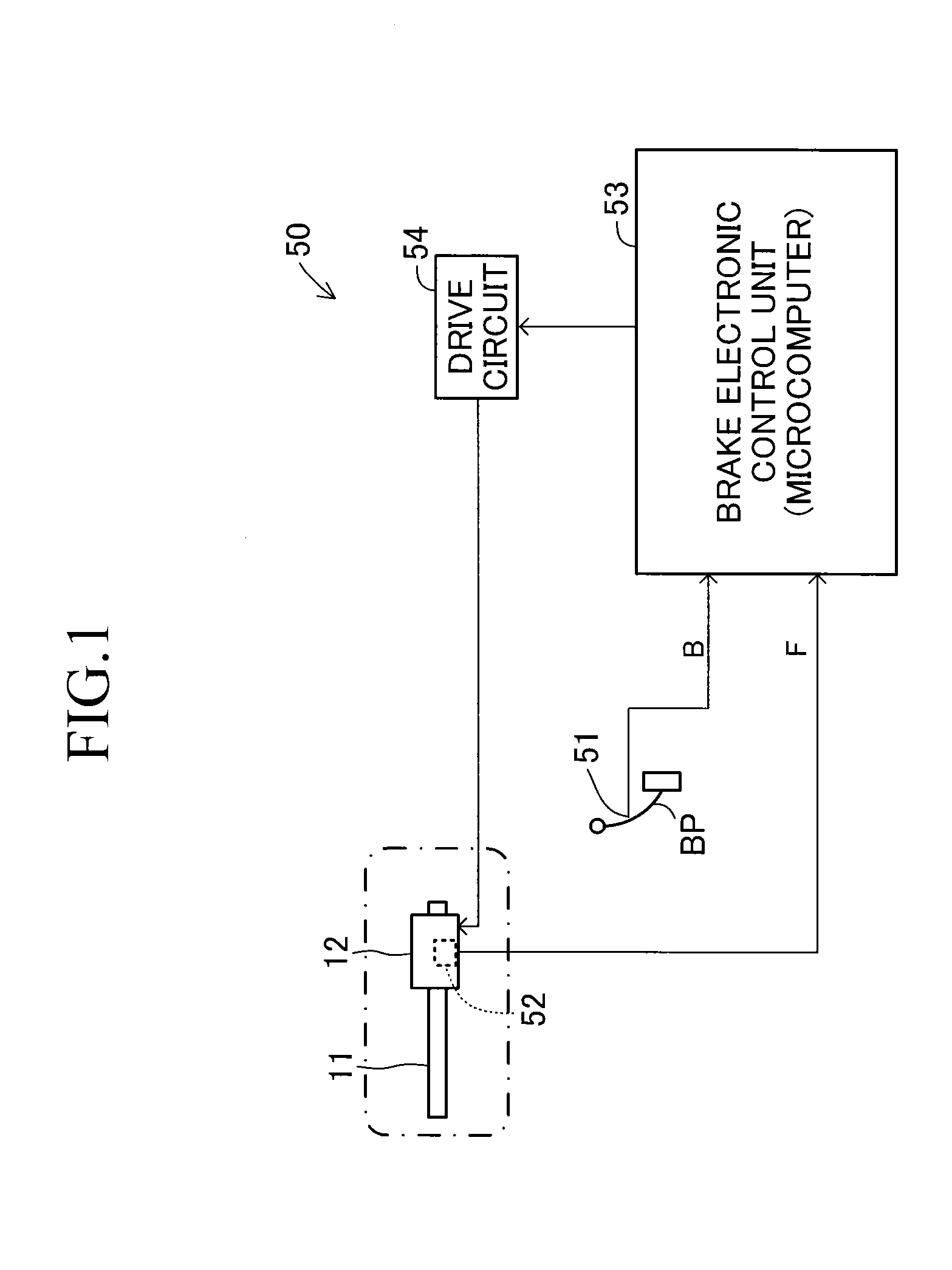Electric brake apparatus for vehicle
a technology of electric brakes and brake pads, which is applied in mechanical devices, brake systems, transportation and packaging, etc., can solve the problems of complex and troublesome drive control, and achieve the effects of accurate detection, simplified structure and arrangement, and good brake feeling
- Summary
- Abstract
- Description
- Claims
- Application Information
AI Technical Summary
Benefits of technology
Problems solved by technology
Method used
Image
Examples
first embodiment
[0043]a. First Embodiment
[0044]An embodiment of the present invention will now be described in detail with reference to the drawings. FIG. 1 schematically shows an electric brake apparatus according to a first embodiment of the present invention.
[0045]This electric brake apparatus includes a disc rotor 11 (a brake rotation body) which rotates unitarily with a wheel about the rotation axis of an axle, and an electric caliper 12 supported by an unillustrated mounting bracket fixed to a vehicle body such that the electric caliper 12 is movable along the direction of the rotation axis of the disc rotor 11. Notably, although FIG. 1 schematically shows only one wheel of a vehicle, the electric brake apparatus may be provided for each of left and right front wheels of the vehicle, each of left and right rear wheels of the vehicle, or each of all the wheels of the vehicle.
[0046]The electric caliper 12 is electrically controlled in response to a driver's brake operation so as to bring fricti...
second embodiment
[0094]b. Second Embodiment
[0095]In the above-described first embodiment, when the brake pedal BP is operated by a driver, the brake ECU 53 drives and controls the brake motor 21 so as to apply a braking force to a rotating wheel. However, the electric brake apparatus of the present invention may be embodied such that when a braking force is to be applied to a rotating wheel, like a known brake apparatus, the piston is advanced through use of oil pressure (hydraulic pressure) of brake fluid so as to bring the friction pad into pressure contact with the frictional sliding surface of the disc rotor, and the electric brake apparatus operates as a so-called electric parking brake apparatus for braking rotation of a wheel when the vehicle is parked or stopped. This second embodiment will now be described. Portions identical to those of the first embodiment are denoted by the same reference numerals, and their descriptions will not be repeated.
[0096]In this second embodiment, a brake fluid...
PUM
 Login to View More
Login to View More Abstract
Description
Claims
Application Information
 Login to View More
Login to View More - R&D
- Intellectual Property
- Life Sciences
- Materials
- Tech Scout
- Unparalleled Data Quality
- Higher Quality Content
- 60% Fewer Hallucinations
Browse by: Latest US Patents, China's latest patents, Technical Efficacy Thesaurus, Application Domain, Technology Topic, Popular Technical Reports.
© 2025 PatSnap. All rights reserved.Legal|Privacy policy|Modern Slavery Act Transparency Statement|Sitemap|About US| Contact US: help@patsnap.com



